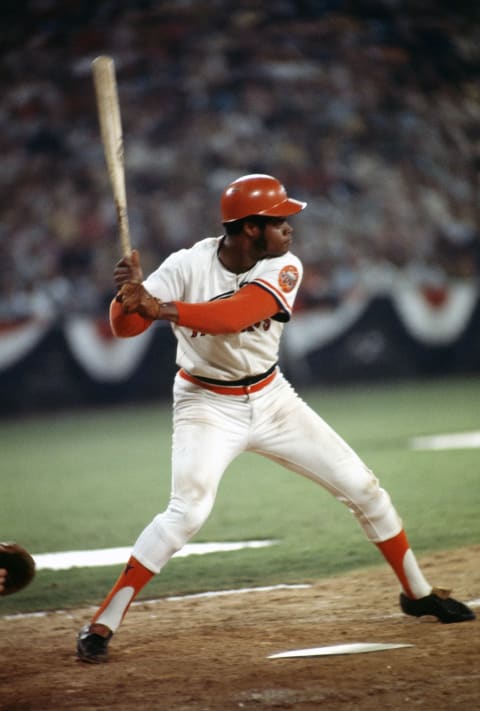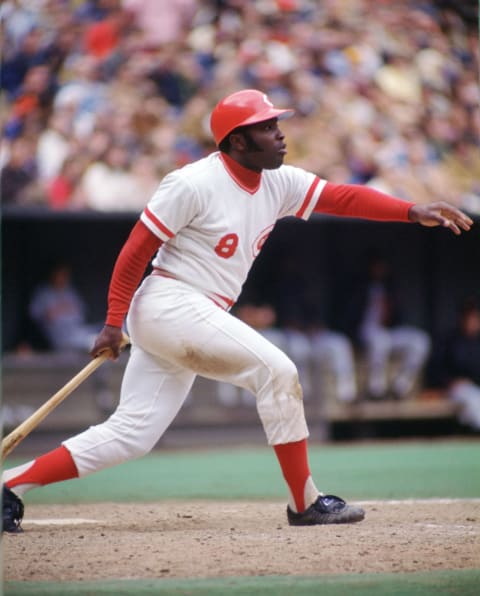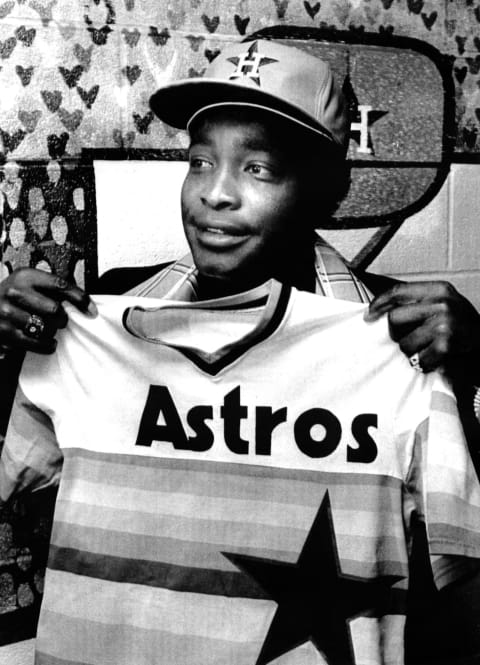Astros: Reviewing the 1971 Joe Morgan trade with Reds

We take a look back at the trade in which the Houston Astros sent Joe Morgan to the Reds.
November 29, 1971 might as well be referred to as a date which will live in infamy, at least as far as the Houston Astros are concerned. That’s the day they traded future Hall of Famer Joe Morgan to the Cincinnati Reds.
The Astros sent Morgan, Ed Armbrister, Jack Billingham, Cesar Geronimo and Denis Menke to Cincinnati in exchange for Lee May, Tommy Helms and Jimmy Stewart (no, not the actor). It turned out to be one of the most lopsided trades in history after Morgan became a star.
He was a good player in Houston, though not as good as he would later become. He first broke in as a 19-year-old in 1963 and would become the team’s regular second baseman in 1965, leading the majors in walks. He stole 40 or more bases in each of his final three seasons in Houston, not hitting for a great average or much power, but getting on base and playing solid defense. He made two All-Star teams.
But Morgan ran afoul of Astros manager Harry Walker, which is what led to his trade. Morgan believed Walker was a racist, while Walker claimed to have issues with Morgan’s attitude. Fellow Astro Jimmy Wynn also had his issues with Walker. The worst part of it all is the Astros would fire Walker less than a year after they traded Morgan.

What the Astros Got
The biggest piece of the return was May, a power-hitting first baseman. The Astros needed some more power in their lineup and he was coming off three straight seasons of 34 or more homers with the Reds, and he was in his prime at age 28.
His power output declined a bit in Houston, probably as a result of playing half of his games in the Astrodome, but he was still a productive hitter. In three seasons with the Astros, May hit .274/.317/.471 with 81 doubles, 81 homers and 288 RBIs. He gave the team 6.2 WAR in those three seasons before being traded to the Orioles in Dec. 1974 in the deal that brought Enos Cabell to Houston.
Helms was coming off two straight Gold Glove awards and immediately took over at second base for Morgan. But he wasn’t anywhere close to the offensive player Morgan was, offering almost no power and drawing few walks. He didn’t strike out much either, but his value came almost entirely from his defense.
Helms hit .269/.306/.348 with 14 homers in four seasons in Houston with solid defensive metrics, though he didn’t win any more hardware. He compiled 4.2 WAR in his time with the Astros, so he was a solid player, just not anywhere near the player he replaced.
Stewart was mainly a pinch hitter in his two seasons with the Astros, which were also the final two seasons of his career. He totaled a .207/.273/.262 line with no homers in 186 plate appearances, totaling -0.7 WAR.

What the Astros Gave Up
We all know what happened with Morgan. He had been worth 27.0 WAR in his first nine seasons with the Astros, displaying a penchant for drawing walks at a much higher rate than he struck out. His batting average and slugging numbers weren’t anything special, but he walked so much that he always had good on-base percentages.
He took things to another level in Cincinnati, though. Following the trade, he went on a run of five straight seasons with at least 8.6 WAR, including a ridiculous 11.0 WAR in 1975, the first of his two straight MVP campaigns. He was an All-Star in all eight of his seasons with the Reds.
He hit .288/.415/.470 with the Reds, drawing 881 walks while striking out just 410 times. He also totaled 220 doubles, 152 homers and 406 stolen bases in Cincy. Altogether, he gave the Reds a total of 57.9 WAR in those eight seasons, which is more than some Hall of Famers have for their entire careers.
Billingham spent three seasons with the Astros and became a full-time member of the rotation in 1971. In total, he was 29-32 with a 3.75 ERA in 61 starts and 70 relief appearances, compiling 2.9 WAR. He hit his peak with the Reds, making the All-Star team in 1973 by going 19-10 with a 3.04 ERA, leading the league in starts (40), shutouts (7), and innings pitched (293.1). Altogether, he pitched to a 3.85 ERA in six seasons with the Reds, totaling 1.9 WAR.
Menke was coming off two straight All-Star selections as the Astros shortstop, including hitting .304/.392/.441 in 1971. He gave the Astros 9.1 WAR in four seasons before giving the Reds 4.1 WAR in two seasons. He hit a combined .218/.340/.318 while primarily playing third base in Cincinnati.
Geronimo was a center fielder, which the Astros didn’t need thanks to the presence of Cesar Cedeno. He won four Gold Gloves in nine seasons with the Reds, totaling a .261/.330/.371 line and 13.2 WAR. He’d provided the Astros with -1.1 WAR in three seasons prior to the trade.
Armbrister had yet to reach the majors at the time of the trade, but played for the Reds in parts of five seasons. Mostly a pinch hitter, he compiled a .245/.307/.377 line with four homers and 19 RBIs in 302 plate appearances, totaling -0.1 WAR.

The Final Verdict
This one isn’t difficult to judge. The Reds came away with a total of 77.0 WAR from the five players they received, most of which of course came from Morgan. The Astros, meanwhile, got 9.7 WAR from the three players they got back. Pretty lopsided.
More from Climbing Tal's Hill
- Just how much better is the Houston Astros playoff rotation than the rest?
- Houston Astros: A Lineup Change to Spark Offense
- Astros prospect Hunter Brown throws 6 shutout innings in debut
- Always faithful Astros World Series champion Josh Reddick defends the title
- Michael Conforto declines Astros’ 2-year, $30 million offer
That’s not to say they didn’t get any value. May and Helms were solid players, particularly May. And the Astros did get Cabell a few years later, who would provide another 9.4 WAR in eight seasons in Houston. So it’s not as if the trade was a total loss.
Still, no one’s going to argue the trade was worth it. Morgan immediately turned into a bona fide star with the Reds and launched himself toward the Hall of Fame. Who knows if the Astros would’ve won anything if they’d kept Morgan, but it’s no coincidence that the Reds won three NL pennants and two World Series during his time there.
Morgan would return to the Astros for one season in 1980, which was incidentally the first time the club would make the playoffs. But by then, he was 36 and had his best years behind him. It’s fair to wonder what might have been if his prime had been spent in Houston instead of Cincinnati, and it was largely thanks to a manager who’d be gone shortly after Morgan left.